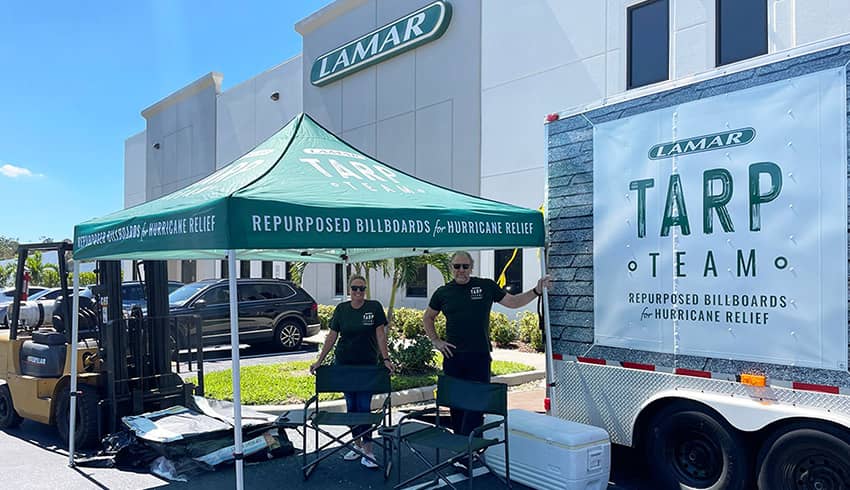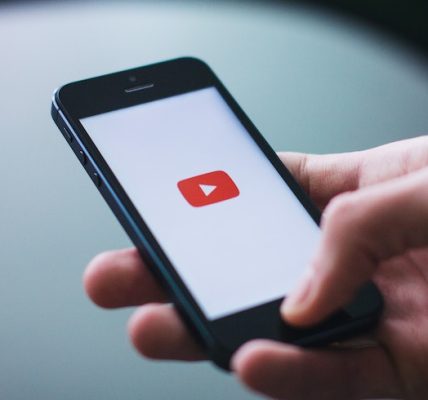In the world of outdoor advertising, billboards are a familiar sight. These towering structures dominate highways and urban landscapes, serving as giant canvases for brands. But have you ever wondered what happens to the vinyl posters once the advertising campaign ends? Instead of heading to landfills, many of these vinyl billboards are being repurposed for a vital cause: providing temporary roofing for hurricane-damaged homes. This innovative reuse is helping families affected by natural disasters, particularly in hurricane-prone regions of the United States.
From Billboards to Roof Tarps: A Creative Solution for Disaster Relief
In recent years, there has been a growing trend among outdoor media companies to switch to digital displays. However, for companies that still use analog vinyl billboards, a creative and eco-friendly initiative has emerged. Large swathes of decommissioned billboard vinyl, once used to display advertisements, are now being transformed into emergency roof tarps for communities affected by hurricanes.
One of the key organizations behind this movement is Every Shelter, a U.S. non-profit dedicated to providing shelter solutions for refugees and displaced individuals. Their Emergency Tarp Program focuses on repurposing old billboard vinyls as temporary roof coverings for homes damaged by hurricanes. This initiative is crucial for families whose homes are still livable but have been left exposed to the elements due to roof damage.
By using donated vinyl billboards, Every Shelter is able to provide durable, weather-resistant tarps that serve as a protective barrier against rain, wind, and debris. The vinyl is folded, sewn, and carefully positioned to ensure that the advertisements—such as images of lawyers or fast food—are hidden inside, sparing homeowners from having a large commercial display on their rooftops.
The Role of Outdoor Media Companies
This initiative would not be possible without the support of outdoor media companies. Among the leaders in this effort is Lamar Advertising, the largest billboard operator in the U.S. Based in Louisiana, Lamar has launched its own program, aptly named the Tarp Team, which has been activated following the devastating storms that hit Florida, Georgia, North Carolina, and Tennessee.
Lamar’s Tarp Team plays a vital role in disaster recovery efforts by donating and distributing used billboard vinyls to communities ravaged by severe weather. These vinyls, ranging in size from 200 to 700 square feet, provide much-needed temporary shelter for families trying to rebuild their lives after a hurricane. Not only are these tarps sturdy and waterproof, but they also offer an eco-friendly solution by repurposing what would otherwise be discarded material.
In times of crisis, these decommissioned billboards become more than just a temporary roof. They symbolize hope and resilience for those working to recover from natural disasters.
The Environmental Impact: Reducing Waste, Increasing Sustainability
The practice of repurposing billboard vinyls as emergency tarps offers both humanitarian and environmental benefits. Billboards are typically made from PVC vinyl, a durable material designed to withstand harsh outdoor conditions. However, once the advertising campaign ends, these massive sheets of vinyl are often discarded, contributing to landfill waste.
Through programs like the Emergency Tarp Program and the Tarp Team, outdoor media companies are reducing their environmental footprint by giving these materials a second life. Instead of being thrown away, the vinyls are being put to good use, providing temporary shelter for disaster survivors.
Additionally, some companies in the U.S. have found other creative uses for old vinyl billboards. These materials are often resold or repurposed as tarps for various non-shelter purposes, such as covering piles of construction materials or landscaping supplies. The durability and weather-resistance of PVC vinyl make it ideal for such applications, offering a longer-lasting alternative to traditional tarps.
A Lifeline for Hurricane-Prone Regions
Hurricanes and tropical storms are a grim reality for millions of Americans living in the Southeast. In the aftermath of such disasters, one of the most pressing concerns is finding shelter. Even if a home is structurally sound, a damaged roof can leave families vulnerable to further destruction from rain and wind.
Programs like Every Shelter’s Emergency Tarp initiative and Lamar’s Tarp Team provide an immediate solution for these families, allowing them to remain in their homes while repairs are made. The large, heavy-duty vinyl tarps not only keep the weather out but also give families peace of mind as they focus on rebuilding their lives.
For homeowners in areas hit hard by hurricanes, the sight of a sturdy billboard vinyl stretched across their roof is more than just a temporary fix—it’s a reminder of the power of community and the importance of sustainability.
“Decommissioned billboard vinyls are being repurposed as durable roof tarps to provide temporary shelter for homes damaged by hurricanes, offering a sustainable solution for disaster relief.”
The Future of Vinyl Repurposing
As outdoor media companies continue to innovate with digital signage, there will likely be fewer traditional vinyl billboards in the future. However, as long as these materials are being used, their potential to help in disaster relief efforts should not be overlooked.
The collaboration between non-profits like Every Shelter and companies such as Lamar Advertising demonstrates the incredible impact that can be made when businesses and organizations work together for the greater good. Not only does this initiative provide a critical resource for families in need, but it also reduces waste and promotes sustainability in the advertising industry.
In the face of increasing natural disasters, programs like these offer a glimpse of how innovation and compassion can turn what was once a disposable product into a vital tool for recovery.










